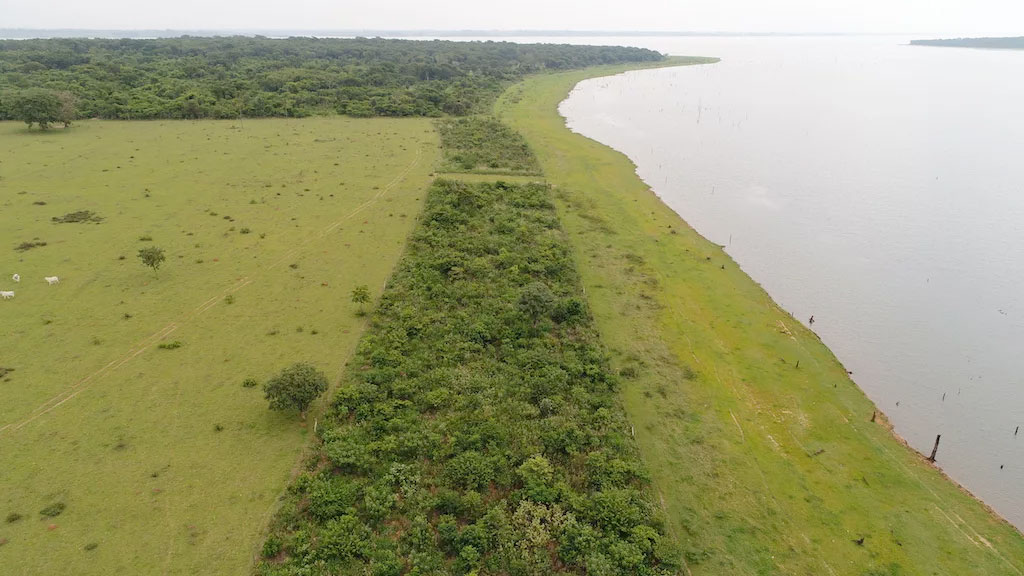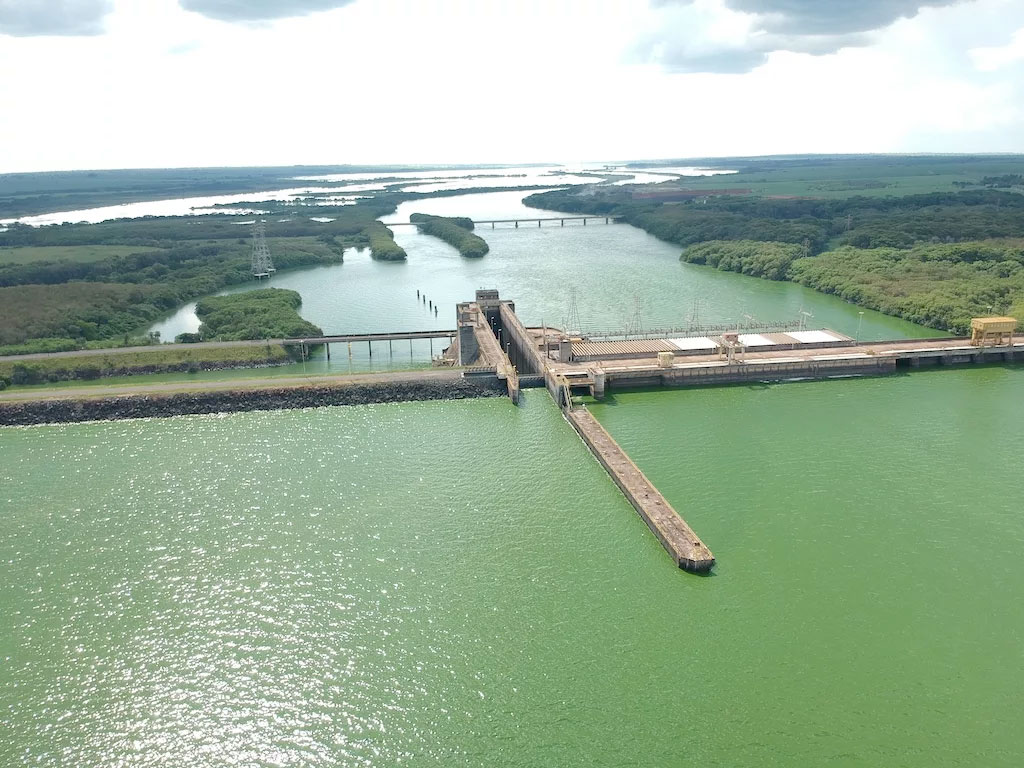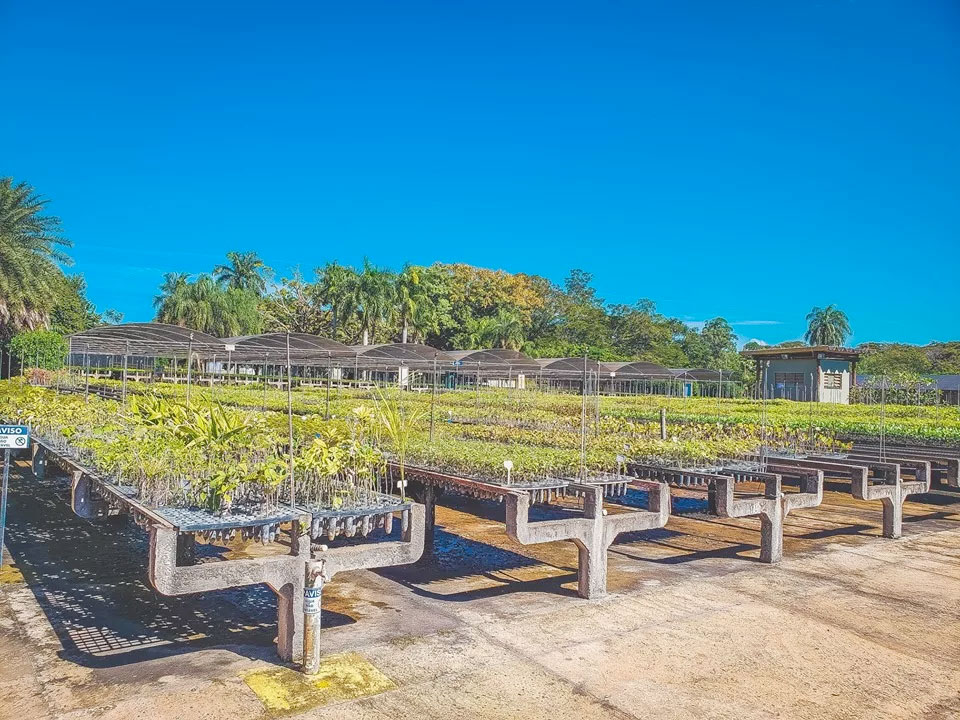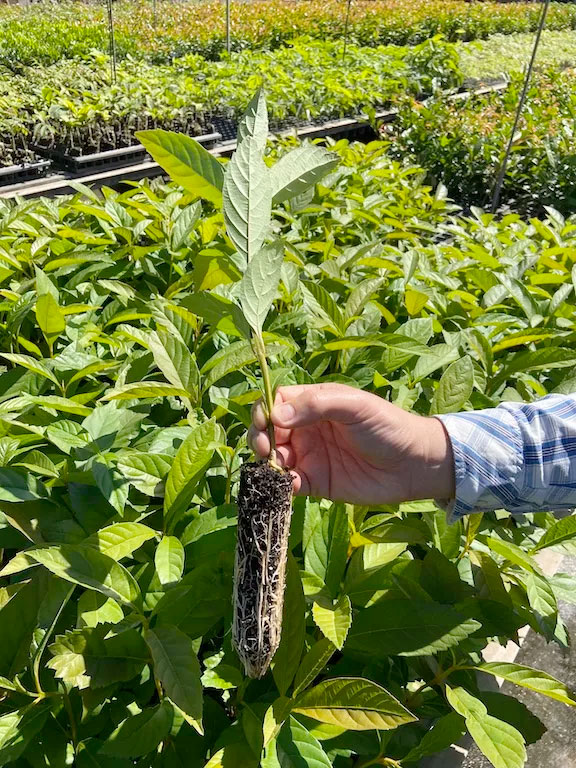Apoie nossas
causas
Se mantenha informado de nossas ações
14 de March de 2024
Meet Sônia Maria de Souza, a small-scale rural producer from the Dandara Settlement in Promissão (São Paulo). Sônia is in the business of producing and selling milk, fruit and vegetables, primarily catering to the local school meals program. She's already feeling the impact of climate change, as the heat has been shortening harvest times. What is the connection between Sonia's agricultural venture and the everyday act of flicking on a light switch or powering up the air conditioner in the bustling metropolis of São Paulo? Enter the world of forest restoration. Here's the breakdown: planting trees around the local hydroelectric plant on the Tietê River serves as a water security strategy for energy generation and extends the reservoir's lifespan, reducing the risk of blackouts in scenarios of rainfall scarcity.
"It's truly incredible to witness the rebirth of springs after so much effort to harmonize farm production with a growing forest," shares Sônia, who also serves as the treasurer of the smallholder producers co-op COOPROCAM in Promissão (SP). Seven years ago, these producers, who together occupy 200 plots, received support to establish an Agroforestry System (SAF). This involved a collective effort to plant native trees along watercourses, intermingled with fruit trees. Sônia reflects on the experience, expressing disappointment, "Unfortunately, our hard work fell prey to hares who consumed everything, we were unable to yield a harvest." Nevertheless, the setback didn't stop them from pursuing the dream.
While the first harvest may not have thrived, a new forest of native trees successfully took root in the Permanent Protection Area (APP) along the streams flowing into Tietê tributaries. Today, it stands tall and flourishing, having received a boost with additional seedlings. Their first experience paved the way for a renewed effort in 2022, when a new Agroforestry System (SAF) was introduced in the settlement, except this time it was positioned closer to homes. It features rows of fruit-bearing trees, alongside native species, with a central zone dedicated to food production, including crops like chard and zucchini. "Our current ambition is to expand even further, starting a new reforestation area, growing vegetables and greens and installing paddock fencing for calves, using an agrosilvopastoral system," says Sônia.


Promissão's water reserve.
Climate Impacts
"If everyone does the same, we can shape a different future. What we are doing is still insufficient; there's a need for more awareness and information about restoring trees and climate impacts," she emphasizes. Sônia notes that okra used to be harvested for seven months, or even a year, but today it barely lasts for three months due to the warm weather and changes in rainfall patterns.
The Midwestern region of São Paulo stands out for its mix of soil, climate, and scenery, blending the traits of the Atlantic Forest and Cerrado biomes. Here, agriculture is a major player. It's on the priority list for forest restoration, with standout projects like the one in the Dandara Settlement. AES Brasil is backing the seedling planting efforts in the vicinity of the Promissão Hydroelectric Plant, teaming up with SOS Mata Atlântica under its Forests of the Future program.
The program unites civil society, private enterprises, landowners, and the government in collaborative projects aimed at restoring forests. Both individuals and companies can contribute in two ways: through voluntarily participation or mandatory compensation in the state of São Paulo through the Environmental Recovery Commitment Agreement (TCRA).
The program facilitates collaboration between donors and rural landowners who need to restore areas to comply with the Native Vegetation Protection Law (12.651/12). Seedlings are strategically planted based on the mapping of the biome’s priority areas for restoration. The NGO teams up with plant nurseries and service providers to diagnose areas, plant seedlings, ensure upkeep, and monitor progress. This effort boosts the restoration chain.
Socially Driven Restoration
In Promissão, the partnership stands out as a compelling example of large-scale ecosystem restoration driven by voluntary sustainability efforts. So far, an impressive 2.3 million seedlings have been planted. Over the span of five years, the "Mãos na Mata" initiative, spearheaded by AES Brasil in the vicinity of its reservoirs, has successfully reclaimed around 5,000 hectares in the state of São Paulo. By 2029, the goal is to reforest an additional 1,400 hectares, going beyond the mere provision of seedlings. The initiative addresses not just environmental concerns but also social aspects, providing benefits to local wildlife and plant ecosystems, safeguarding groundwater sources, and mitigating reservoir erosion and siltation.


Mãos na Mata project
Rafael Paranhos, an environmental engineer at AES Brasil, breaks it down: "What we're doing is forging collaborations with other landowners and partners to drive restoration actions. We provide the planting area, seedlings, and the managerial know-how of our environmental experts, leveraging our partners' investments to scale up and magnify positive impacts in the restoration areas." After five years, the initiative has matured and now includes income-generating projects, professional training, and promotes regional culture, with the support of universities and NGOs, as seen in the actions undertaken in the Dandara rural settlement.
From the plant nursery in Promissão (SP), a dedicated team churns out an impressive one million native seedlings every year, of Atlantic Forest and Cerrado species. Half of these are allocated for in-house initiatives, and the other half, totaling 500,000, are designated for collaborative projects. The concrete outcomes of these endeavors come to life as pumas are seen roaming through sugarcane fields in the region. "We're deeply committed to safeguarding and preserving biodiversity and ecosystems, especially given the ongoing threat of deforestation to the Atlantic Forest," declares Paranhos.